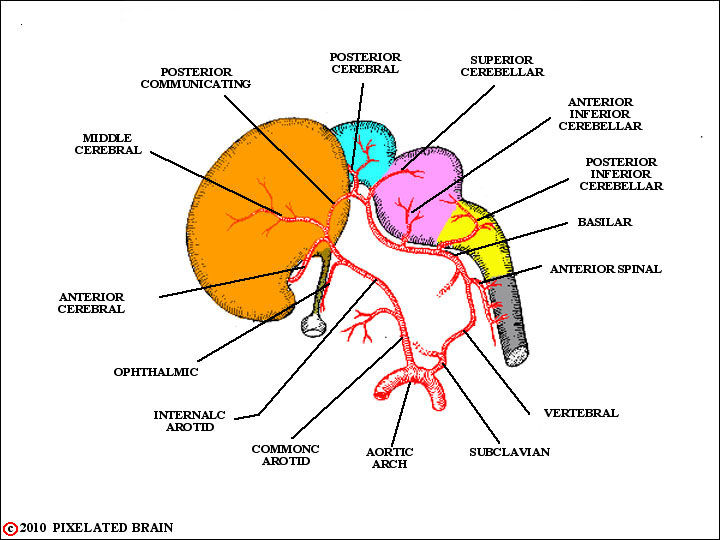MODULE 10 - SECTION 1 - THE EXTRACRANIAL COMPONENT
of the
ARTERIAL BLOOD SUPPLY to the BRAIN

DEVELOPMENT of the BLOOD SUPPLY of the BRAIN
It is apparent at an early stage in development that the brain will derive its blood supply from two paired sets of vessels - the internal carotid arteries and the vertebral arteries. Tracing these vessels upward from the aortic arch to the point where they enter the cranial cavity is within the province of gross anatomy, but we suggest you refresh your memory by looking at a gross anatomy text.
This is to remind you that impaired blood supply to the brain is often due to partial or complete occlusion of one of these vessels. Regions where the vascular system divides or gives off branches are common sites for the development of atherosclerotic plaques. Thus, the internal carotid frequently becomes occluded at the point where it arises from the common carotid. It's important to be thinking about this possibility, because in many cases the obstruction can be removed by the vascular surgeon. Note that the ophthalmic artery is the first one to be given off by the internal carotid within the cranial cavity. So, if the internal carotid were occluded in the neck, there is the possibility that retrograde blood flow through the ophthalmic (which is fed by the external carotid) might provide some measure relief to the intracranial distribution of the area normally supplied by the internal carotid. This is just one more example of importance of the concept of collateral circulation.
Other anatomical points of interest regarding this part of the vascular supply are:
1) Recall that the vertebral artery gets into the cranial cavity by emerging from the foramen in the transverse process of the Atlas (C 1) and running medially on the upper surface of the posterior arch of this vertebra to enter the cranial cavity through the foramen magnum. There is the chance, in elderly people with arthritis, that extreme rotation of the head may pinch the artery in this part of its course and transiently reduce the blood supply to the brain2) Remember that the internal carotid artery gets into the skull by passing through the carotid canal and then taking a rather sharp bend (the carotid "siphon") as it goes through the cavernous sinus . Within the sinus, the artery has a complex relationship to several cranial nerves. This is significant because it accounts for the fact that aneurysms of the artery at this level may - either by direct pressure or rupture into the sinus - cause a variety of cranial nerve palsies. Arterio-venous fistulas within the sinus cause similar problems.